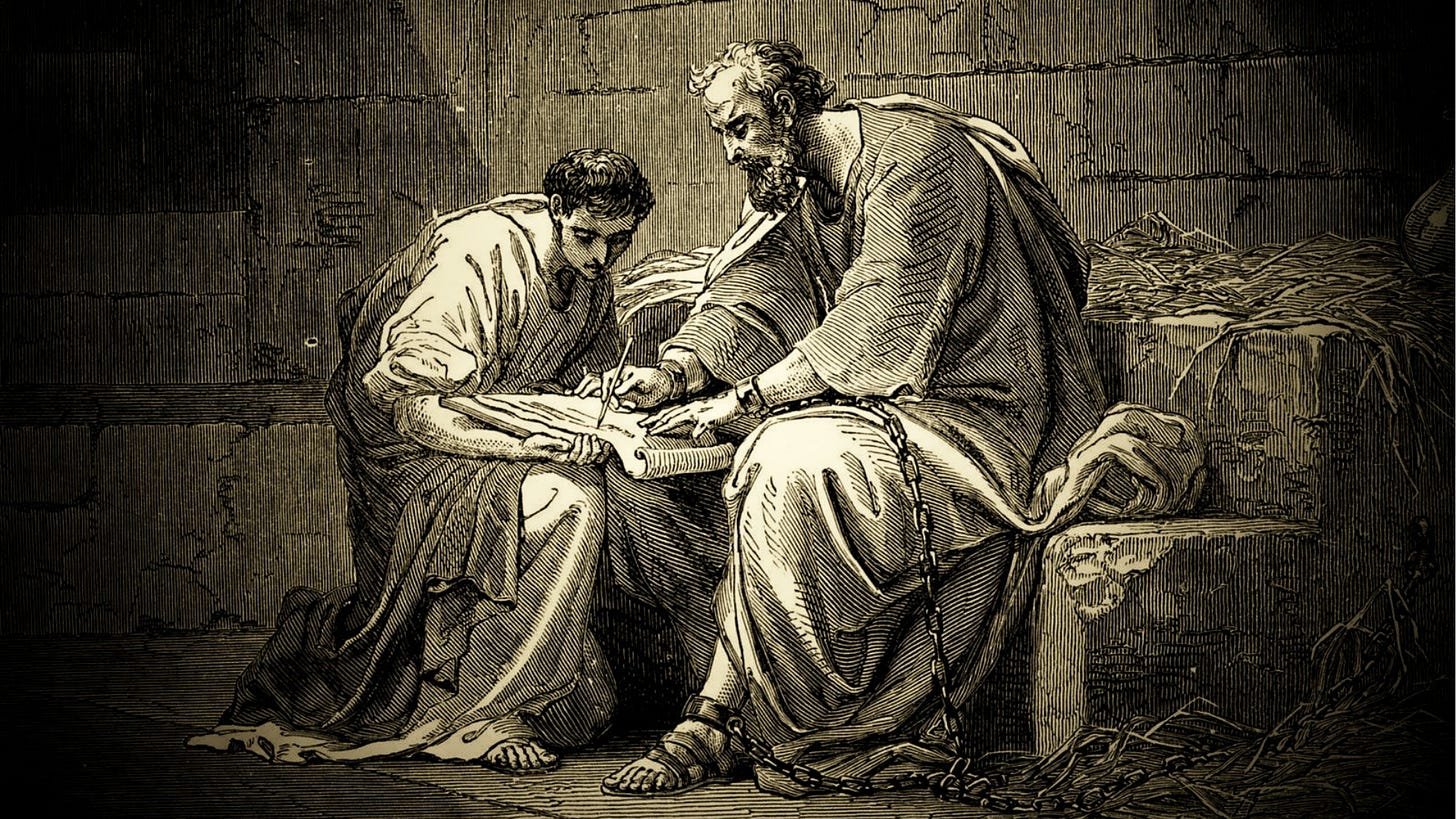Christ Is Enough
Paul’s apostolic authority and the Colossian crisis.

It is worth noting how the apostle Paul begins his letter to the Colossians since it offers a framework for understanding the rest of the epistle. Paul addresses this church in the official capacity as “an apostle of Christ Jesus” (Col. 1:1), although he promptly adds that this is not his own doing. Rather, it is only because of God, whose divine will and wisdom put him into this position as a minister of the gospel (Col. 1:23) in the first place. Accordingly, Paul’s words are freighted with a divine stamp of approval and authority, which is pertinent considering what he conveys throughout the rest of the letter as he addresses the situation threatening the congregation at Colossae. Prefacing his epistle in this way is his attempt to avoid being mistaken or misconstrued, even as he admonishes the Colossians to take his words to heart.
1. The Setting at Colossae
Colossae was a very influential city in its day due in large part to its location along a main highway, which connected the port city of Ephesus to the rest of Phrygia (a.k.a. modern-day Turkey). Since it was so well-traveled, Colossae, like its sister city Laodicea, was known both for its economic and religious wealth. Excavations in and around Colossae have unearthed an array of pagan images and inscriptions along with several artifacts used in the worship of gods such as Artemis, Dionysius, and even Zeus. Financial opulence and religious pluralism made for a unique setting in which to find a community of those whose faith was tethered to the resurrection of Jesus of Nazareth. This seems to correspond, though, with the issues with which Paul grapples in his letter.
2. Epaphras, the Church Planter
The Colossian church was likely an indirect byproduct of Paul’s ministry in Ephesus. As the apostle himself seems to indicate, the Colossian church was planted by Epaphras, whom Paul describes in rather glowing terms (Col. 1:7–8; 4:12). The pervading theory supposes that Epaphras was a convert of Paul’s two-year preaching term with the Ephesians, after which the work in Colossae and the neighboring metropolises of Laodicea and Hierapolis began, with Epaphras bringing God’s word of promise to the lost in that region (Col. 4:13). In fact, it was Epaphras who, in all likelihood, reported to Paul what was occurring in Colossae while the apostle was incarcerated in Rome. (He may have even been Paul’s cellmate if Philemon 1:23 is to be taken literally.)
3. Paul’s Christocentric Response
But after listening to Epaphras’s update, Paul puts pen to paper and writes his epistle, the chief objective of which was to remind the believers in Colossae what they have and what they’ve been given in “the word of the truth, the gospel” (Col. 1:5). As is revealed in the rest of the letter, the Colossians were facing an influx of “syncretized” systems of faith and “self-made religion” (Col. 2:23), which were threatening to wrest their faith from Christ alone and hitch it to something else. “These Colossian Judaizers,” R. C. H. Lenski comments, “claimed to have an advanced Christianity, Paul’s being a back number, an inferior, imperfect article.”1 Here’s how James R. McConnell explains it in his essay on the contextual and historical background of Colossians:
From a literary perspective, one can make the following observations about these people simply by taking the author’s statements within the letter seriously: they are teaching the Colossians traditions to which they adhere; their arguments are philosophical in nature; their teaching is a form of wisdom meant for spiritual growth and protection from malevolent spirits; they are promoting asceticism; their teachings supersede the significance of Christ in the community; and these teachings have caused the author to write the letter.2
Paul’s gospel, which was concerned with the crucifixion and resurrection of Christ for sinners, was reckoned as subordinate, especially when compared to the burgeoning influence of asceticism and intellectualism. The nascent creeds of the syncretistic teachers, according to Lenski, said that “by fasting and by refraining we are to supplement and to complete for ourselves the deliverance Christ wrought for us, without which supplementation we should after all be lost.”3 This notion is inherently flawed, having “an appearance of wisdom,” as Paul says, but is powerless to effect anything worth writing home about. Religious activity that is rendered both obligatorily and supplementarily to the saving activity of Christ will, in the end, suffocate the spiritual vitality of any community.
These supposed teachers were really just swindlers.
They were promoting a cocktail of trumped-up religious sophistication that was poisoning the flock of God.
Paul’s solution, therefore, is to put every ounce of attention on Christ alone, right where it belongs.
The letter that emerges from this apostolic emphasis, Colossians, is often hailed as the most Christologically hyper-focused piece of writing in the New Testament. Its “central principle,” Alexander Maclaren attests, “is the sovereign and exclusive mediation of Jesus Christ, the God-man, the victorious antagonist of these dead speculations, and the destined conqueror of all the doubts and confusions of this day.”4 There is nothing that the church of Christ needs to hear that isn’t included in the gospel of Christ, which imbues those who receive it by faith with “the riches of full assurance of understanding” (Col. 2:2).
As the letter to the Colossians unfolds, one theme rises to the surface — namely, the all-surpassing superiority and sufficiency of Christ alone. What he’s done is all you need. What he’s finished is more than enough.
Grace and peace to you.
R. C. H. Lenski, The Interpretation of St. Paul’s Epistles to the Colossians, to the Thessalonians, to Timothy, to Titus, and to Philemon (Minneapolis, MN: Augsburg, 1961), 11.
James R. McConnell, “Colossians: Background and contexts,” Review & Expositor 116.4 (2019): 404–5.
Lenski, 11.
Alexander Maclaren, The Epistles of St. Paul to the Colossians and Philemon (New York: A. C. Armstrong & Son, 1901), 8.


